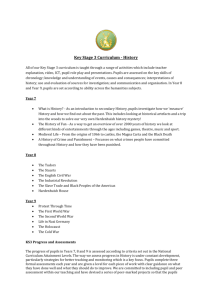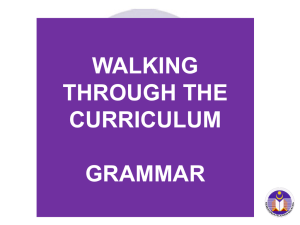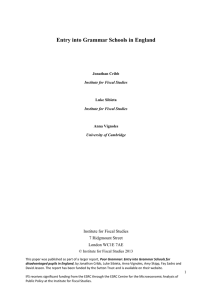EMASS pages for Leicestershire KS3 Literacy Website
advertisement
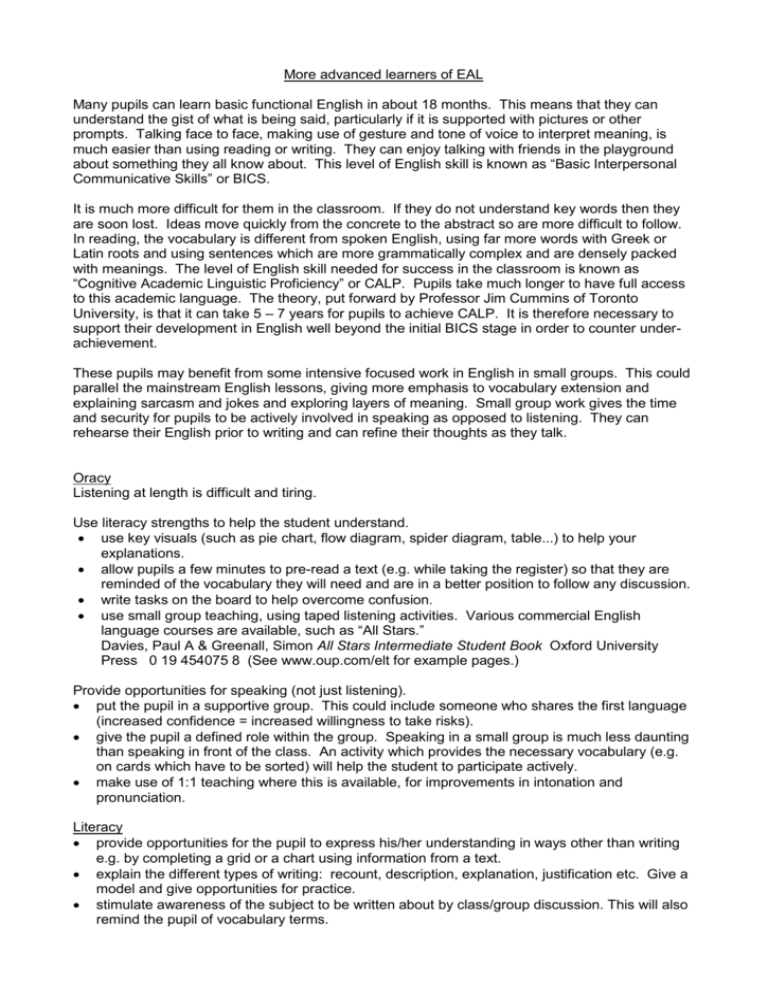
More advanced learners of EAL Many pupils can learn basic functional English in about 18 months. This means that they can understand the gist of what is being said, particularly if it is supported with pictures or other prompts. Talking face to face, making use of gesture and tone of voice to interpret meaning, is much easier than using reading or writing. They can enjoy talking with friends in the playground about something they all know about. This level of English skill is known as “Basic Interpersonal Communicative Skills” or BICS. It is much more difficult for them in the classroom. If they do not understand key words then they are soon lost. Ideas move quickly from the concrete to the abstract so are more difficult to follow. In reading, the vocabulary is different from spoken English, using far more words with Greek or Latin roots and using sentences which are more grammatically complex and are densely packed with meanings. The level of English skill needed for success in the classroom is known as “Cognitive Academic Linguistic Proficiency” or CALP. Pupils take much longer to have full access to this academic language. The theory, put forward by Professor Jim Cummins of Toronto University, is that it can take 5 – 7 years for pupils to achieve CALP. It is therefore necessary to support their development in English well beyond the initial BICS stage in order to counter underachievement. These pupils may benefit from some intensive focused work in English in small groups. This could parallel the mainstream English lessons, giving more emphasis to vocabulary extension and explaining sarcasm and jokes and exploring layers of meaning. Small group work gives the time and security for pupils to be actively involved in speaking as opposed to listening. They can rehearse their English prior to writing and can refine their thoughts as they talk. Oracy Listening at length is difficult and tiring. Use literacy strengths to help the student understand. use key visuals (such as pie chart, flow diagram, spider diagram, table...) to help your explanations. allow pupils a few minutes to pre-read a text (e.g. while taking the register) so that they are reminded of the vocabulary they will need and are in a better position to follow any discussion. write tasks on the board to help overcome confusion. use small group teaching, using taped listening activities. Various commercial English language courses are available, such as “All Stars.” Davies, Paul A & Greenall, Simon All Stars Intermediate Student Book Oxford University Press 0 19 454075 8 (See www.oup.com/elt for example pages.) Provide opportunities for speaking (not just listening). put the pupil in a supportive group. This could include someone who shares the first language (increased confidence = increased willingness to take risks). give the pupil a defined role within the group. Speaking in a small group is much less daunting than speaking in front of the class. An activity which provides the necessary vocabulary (e.g. on cards which have to be sorted) will help the student to participate actively. make use of 1:1 teaching where this is available, for improvements in intonation and pronunciation. Literacy provide opportunities for the pupil to express his/her understanding in ways other than writing e.g. by completing a grid or a chart using information from a text. explain the different types of writing: recount, description, explanation, justification etc. Give a model and give opportunities for practice. stimulate awareness of the subject to be written about by class/group discussion. This will also remind the pupil of vocabulary terms. vocabulary work using a thesaurus and/or bilingual dictionary: the student could build up banks of ‘interesting’ words. grammar: verb formation, prepositions and phrasal verbs may cause particular difficulties. Exercises to address specific grammar points may help some pupils, e.g. Murphy, Raymond. (1993) Basic Grammar in Use, reference and practice for students of English Cambridge University Press. (British English version.) pupils could write collaboratively in pairs. Whiteboards help them to redraft. Sharing a computer also helps them to discuss and amend their work.

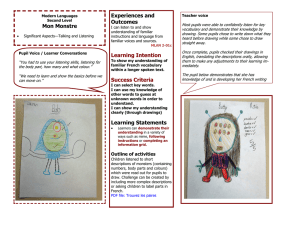


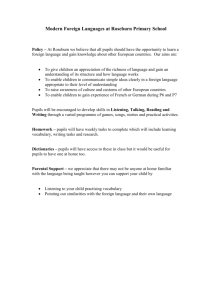



![afl_mat[1]](http://s2.studylib.net/store/data/005387843_1-8371eaaba182de7da429cb4369cd28fc-300x300.png)
